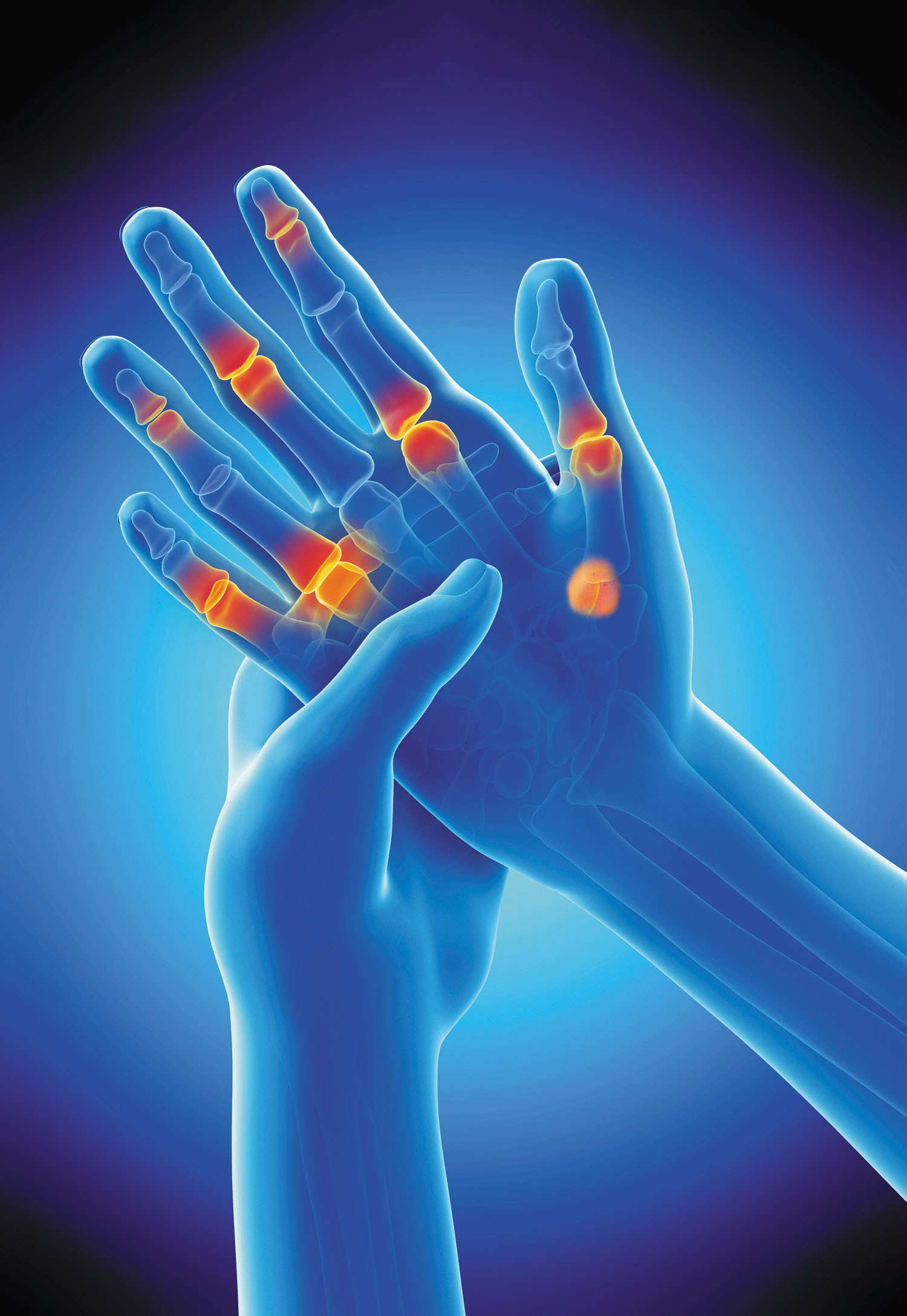Identifying arthritis in your fingers and thumbs
Lumpy, bumpy, swollen, or red? The signs are similar, but they indicate different types of arthritis conditions.
- Reviewed by Anthony L. Komaroff, MD, Editor in Chief, Harvard Health Letter; Editorial Advisory Board Member, Harvard Health Publishing
 What happened to your thumb or fingers? Those versatile tools that always enabled you to skillfully button a shirt, open a jar, or tap out your thoughts on a keyboard are now stiff, hurting, and even changing shape.
What happened to your thumb or fingers? Those versatile tools that always enabled you to skillfully button a shirt, open a jar, or tap out your thoughts on a keyboard are now stiff, hurting, and even changing shape.
Arthritis is most likely the problem, and its effects can compromise your independence. "The American College of Rheumatology has a campaign on how arthritis and other rheumatic conditions affect lives, and the symbol is a fork with twisted tines. That sums it up. Using a fork or doing any simple task can become difficult, whether it's using your cellphone, typing, grooming, cooking, or eating," says Dr. Jeffrey Sparks, assistant professor of medicine at Harvard Medical School and a rheumatologist at Harvard-affiliated Brigham and Women's Hospital.
Finger and thumb joints
Fingers have three joints: the joint where the finger connects to the hand, called the metacarpophalangeal (MCP) joint; the middle joint, called the proximal interphalangeal (PIP) joint; and the joint closest to the end of the finger, the distal interphalangeal (DIP) joint. The joint at the base of the thumb is the carpometacarpal (CMC) joint.
Symptoms and types
Two main types of arthritis affect your thumb or fingers. Symptoms depend on which type you have.
The most common type, osteoarthritis, is a degenerative problem that erodes the cushioning (cartilage) in the joints. As bones grind against each other, new bone forms, showing up as bumps (called nodes) on the joints. "These bony growths cause soft tissue around them to expand. You can get nodes in one or both knuckles, and in different fingers on either hand. Where it shows up is a bit of a mystery," Dr. Sparks says.
In osteoarthritis, the joints most often involved are the DIP and CMC joints, and sometimes the PIP joints. These joints can become painful, stiff, and slightly enlarged and can feel bumpy (where the little bony growths are). These symptoms can limit the motion of the fingers and thumbs.
Rheumatoid arthritis (RA) is different from osteoarthritis. It is caused by an overactive immune system that (for unknown reasons) attacks the lining of the joints. Hands are a common place where RA starts, with the MCP and PIP joints most often affected. As in osteoarthritis, the joints become painful and stiff. However, in RA the joints also become quite swollen, red, and warm, reflecting the inflammation within them.
RA also commonly affects joints in the wrist, feet, ankles, elbows, shoulders, hips, knees and neck. "Often, many joints are affected, and it's usually the same joints on both sides of the body, at the same time," Dr. Sparks says. "Over time, the body damages the joints to point where you lose cartilage and the joints become deformed."
In addition to joint pain, RA can cause fatigue; low-grade fever; sweating; poor appetite; difficulty sleeping; and inflammation of the heart, lungs, or eyes.
Other types of thumb and finger arthritis
Several other types of arthritis can affect the fingers or thumbs, particularly two autoimmune diseases, lupus and psoriatic arthritis. "In psoriatic arthritis, the DIP joints may be involved," Dr. Sparks says, "and there can be little pits in the fingernails."
Another form of arthritis that affects the fingers is gout, caused by a buildup of uric acid (a waste product in the blood) that can form sharp crystals in the joints that cause inflammation. "People know about gout in the toes. It can strike the thumbs and fingers, too," Dr. Sparks says.
What you can do
Talk to your doctor if you suspect you have arthritis in your hands. Don't put it off. "We have drugs that very effectively treat these diseases," Dr. Sparks says. "The earlier arthritis is treated, the more likely it's a milder course. In the case of RA, we can prevent deformities, slow disease, and avoid other complications."
Unfortunately, we don't have drugs to halt or slow osteoarthritis. Treatment involves controlling symptoms and improving function. "We often recommend taking oral painkillers such as acetaminophen [Tylenol], using topical painkillers such as diclofenac [Voltaren Arthritis Pain], using heat or cold therapy, and strengthening your hands," Dr. Sparks says.
For any type of arthritis, you might benefit from wearing a splint or brace, using assistive devices (such as a shirt buttoner) that can help you with daily activities, and working with a certified hand therapist who can tailor therapy to your condition and develop work-arounds for the activities you now find challenging.
Image: © Sebastian Kaulitzki/Getty Images
About the Author

Heidi Godman, Executive Editor, Harvard Health Letter
About the Reviewer

Anthony L. Komaroff, MD, Editor in Chief, Harvard Health Letter; Editorial Advisory Board Member, Harvard Health Publishing
Disclaimer:
As a service to our readers, Harvard Health Publishing provides access to our library of archived content. Please note the date of last review or update on all articles.
No content on this site, regardless of date, should ever be used as a substitute for direct medical advice from your doctor or other qualified clinician.
















